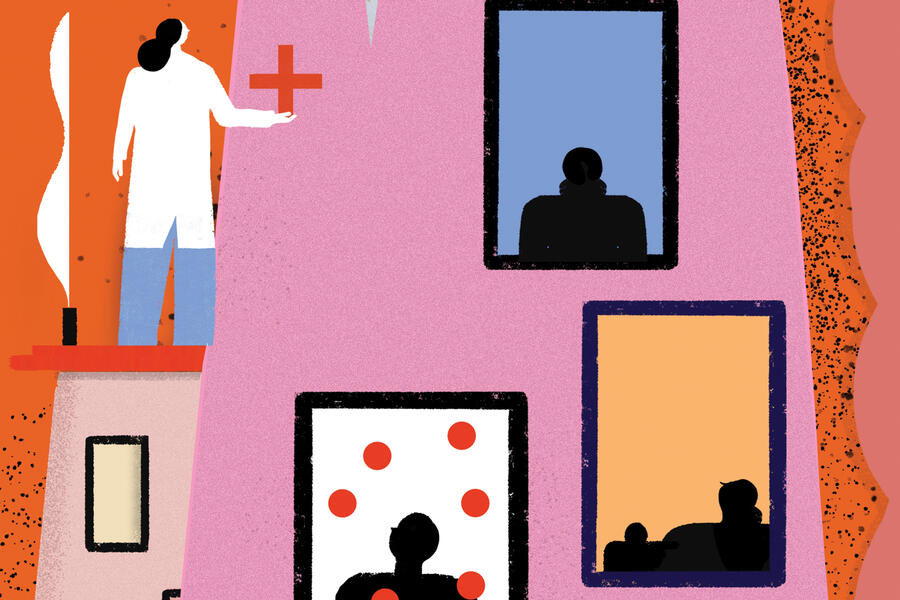Three years ago, after reading about Costa Rica's renowned public health system, Sarah Szanton, dean of the Johns Hopkins School of Nursing, proposed a solution to health care challenges in the United States. Today, her ideas are coming to life via a pilot program that brings health care to Baltimore neighborhoods—and reduces disparities by linking every resident to a nurse and community health worker. Her end goal: to grow the program nationally.
Taking Shape
To create Neighborhood Nursing, Szanton and her colleagues partnered with nursing schools at Coppin State University, Morgan State University, and the University of Maryland. Together, they developed a supplement to primary care that places nurses and health workers in community focal points such as libraries, laundromats, and barber shops. Health care providers also go door-to-door, offering such services as blood pressure and glucose checks "or whatever residents need at the time, whether medical equipment, medication management, or help getting rid of hazards like lead paint or mold," says Lisa Stambolis, senior project manager of Neighborhood Nursing.
Although nurses and community health workers aren't equipped for home remediation projects, they bring in partner organizations that can help. For instance, Baltimore Behavioral Health Systems can support residents struggling with mental health or substance use problems.
Right now, the program is being piloted in the Johnston Square/Oliver neighborhoods in East Baltimore, with plans to start later this year in Sandtown-Winchester in West Baltimore. "Ultimately, we want to create a national program sustained in policy that gives everyone access to support in their own neighborhoods so that they can achieve optimal health," Szanton says.
Community-Centered Care
To develop Neighborhood Nursing, the team started by getting to know the Johnston Square/Oliver community. "Our goal was to gauge interest in a health program co-created with the community," Stambolis says. They talked to residents at community association meetings; visited the neighborhood's senior housing, farm, and parks; and helped a local leader fulfill her plan to create a walking group that "is now off and running on its own," Stambolis says.
The relationship that nurses established with community members differed from the traditional clinician-patient relationship, through which health care providers dispense medical directives and advice. Instead, "we looked at people from a place of strength, realizing that residents already know what they want and need in terms of their own health and well-being," Stambolis says. She adds: "No one wants outsiders coming in acting like saviors."
Also see
Now, as nurses interact with residents, they prompt individuals to steer the support they receive—a strategy shown by research to work. "If an elderly resident smokes cigarettes, they've probably had hundreds of people tell them to quit in their lifetime," Szanton explains. "Instead of doing the same, we ask them about their life aspirations. For instance, if someone wants to walk grandkids to the bus stop, we tell them they'll be less winded if they cut back on cigarettes."
Not Just Sick Care
The U.S. health care model involves treating patients who show up at clinics sick or injured. Although Neighborhood Nursing helps treat sick residents, it embraces a holistic public health model that weaves in preventive and restorative care, management of chronic conditions, and acute care for illnesses, Szanton says. The goal, she says, is to do more preventive care, "but at this point we're helping more with challenges [such as] dangerously high blood pressure or a lack of immunizations."
While the program is based in part on Costa Rica's health care model—lauded as a success story worldwide—it's also based on what nurses have known and practiced for centuries. "In our profession, we listen authentically and look at the whole person," Stambolis says. "People aren't isolated. They're part of their families and communities."
Posted in Community
Tagged nursing, community, baltimore, community-public health








